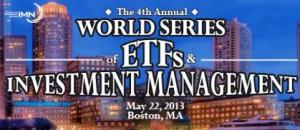 Courtesy of WSJ MarketBeat Columnist Matthew Jarzemsky
Courtesy of WSJ MarketBeat Columnist Matthew Jarzemsky
March 20, 2013
Investors are getting awfully creative in the way they play the volatility surrounding Europe and its crisis.
Amid a renewed flare-up of worries, one investor placed a big bet on European stocks but with a twist; dodging the impact of swings in the euro.
The tiny Europe Hedged Equity exchange-traded fund (HEDJ) stands to multiply in size in the next few days, thanks to a single $102 million trade yesterday.
Tuesday morning, an order hit the tape for 2 million shares of the exchange-traded fund at $50.72. HEDJ tracks a basket of European stocks while using derivatives to offset changes in the price of the euro and prior to Tuesday’s trade had just $46 million in assets.
On Tuesday, an investor who wanted exposure to the strategy likely enlisted a market maker to take the other side of the trade, said Chris Hempstead, director of ETF execution services at WallachBeth Capital LLC, a New York brokerage.
In this case, the market maker would “create” new shares of HEDJ by buying the underlying shares of stock, because the 2-million-share size of the trade sharply exceeded the roughly 900,000 shares of the ETF outstanding at the time.
“Now you’ve got a blockbuster trade, which will almost certainly be followed by creation of 2 million shares,” Hempstead said. “You’ll see assets go from 900,000 shares to nearly 3 million shares in one blink.”
For the entire WSJ MarketBeat report, please click here






